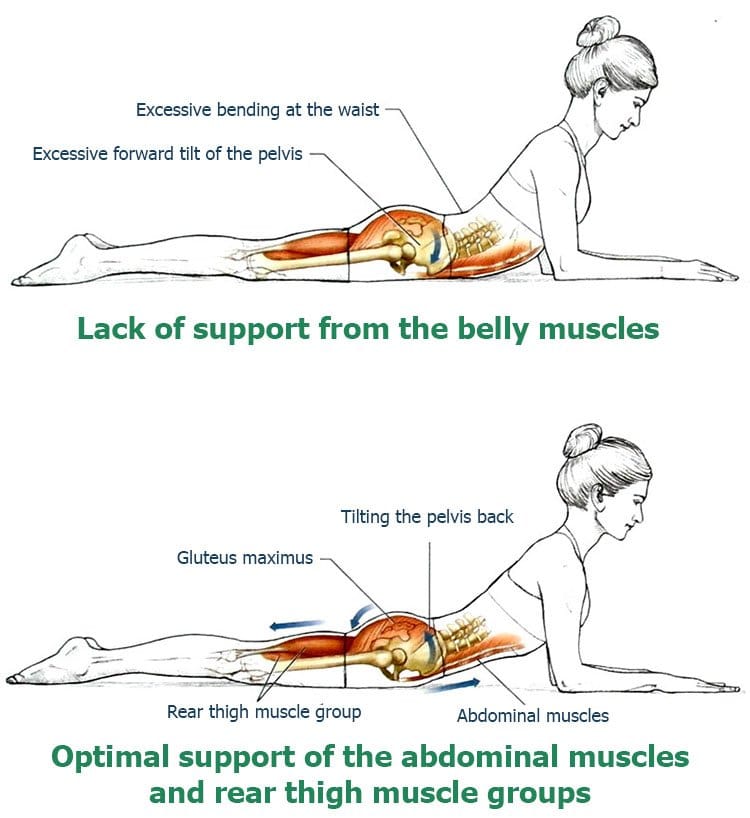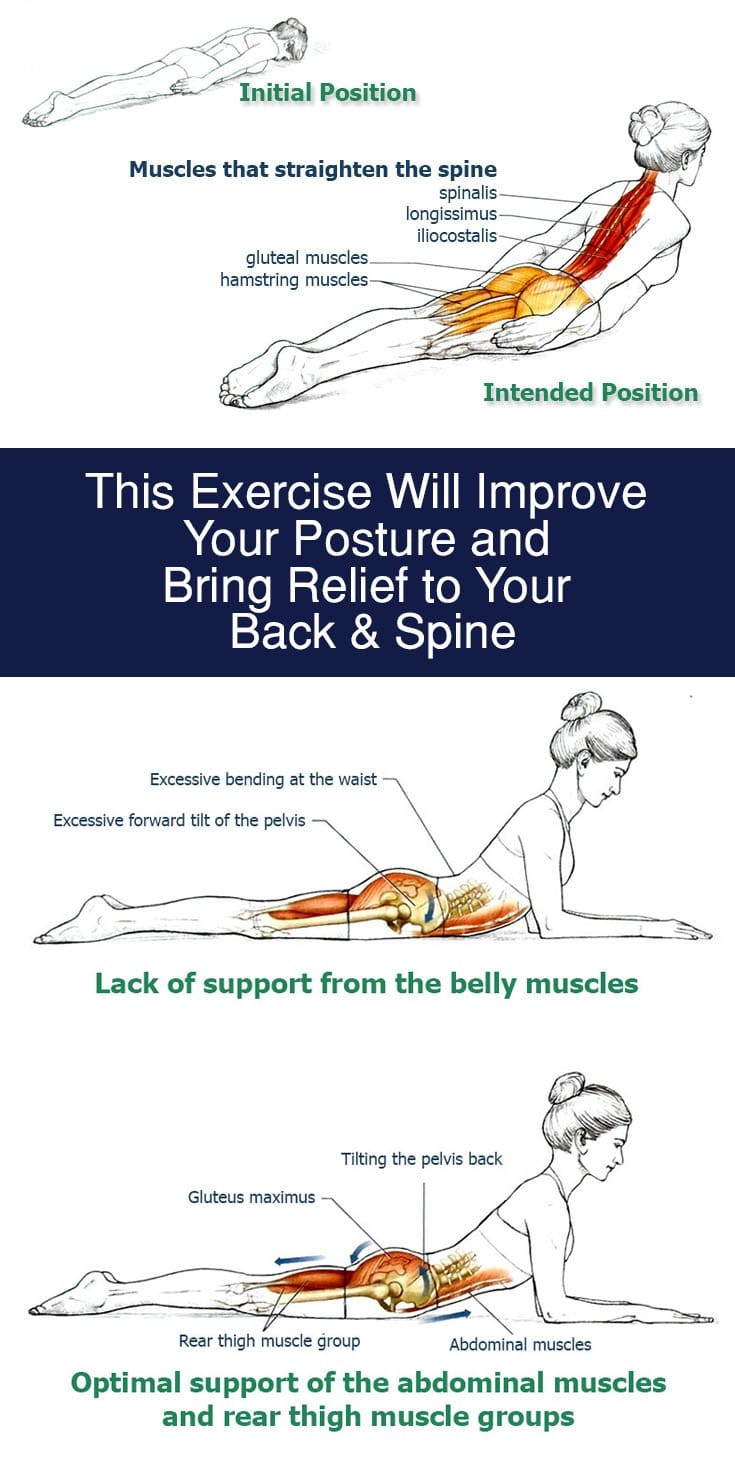The Back Extension Stretch is a widely used exercise to strengthen the muscles on your back, protect your spine from injury and relieve back pain. Physiotherapists apply this exercise not only in sports training, but also in medicine. Our lower and upper back stretches will help you increase the flexibility of your back muscles, help you develop a perfect posture and bring relief to your back. If you work in an office, or tend to sit a lot, you can use Back Extension Stretch to alleviate health issues associated with prolonged sitting.
This is the second exercise in our lower and upper back stretches:
- Exercise #1: Cat-Cow
- Exercise #2: Back Extension (you are here)
- Exercise #3: Back Stretching
- Exercise #4: Heel Kick
- Exercise #5: Double Impact
- Exercise #6: Swimming
- Exercise #7: Stomach Rolls
- Exercise #8: Diving Swan
By starting from the 1st exercise and working your way to the more demanding ones, you are making a gradual progression and protect yourself from injuries. Feel free to take several weeks with one exercise (when working out 2-3 times per week) before you advance to the follow-up exercise. Think of these exercises as stretches and don’t push yourself too hard: stretch in a controlled manner and stay focused at all times. A certain amount of discomfort is perfectly normal, but don’t wait for it to grow into pain (you want to relieve back pain, not cause it). Enjoy!
Back Extension

Initial position. Lie on your stomach and put your forehead on the exercise mat. Place your arms at your sides and press your palms on the thighs. Straighten your elbows. Put your legs together, drawing out the toes slightly.
- Exhale: gradually lift the head, chest and upper abdomen from the mat, keeping the feet and hands in the initial position;
- Inhale: slowly lower the trunk and head to the initial position. Repeat the exercise 10 times.
Doing this exercise 3 times a week will bring definite improvements to your glutes, back and stomach muscles. It will also positively affect internal organ functions, making you will feel much better overall.
[adinserter block=”2″]
Make Sure You:
- Provide some support for the spine during the extension of the back by tensing the abdominal muscles and not releasing your feet from the mat;
- Make your body rise gradually, vertebrae by vertebrae, starting at the cervical spine. Pay attention to the movement of the muscles around the spine and keep your head aligned with the body;
- Place your arms close to your sides so you can also use the adductor muscles, particularly the latissimus dorsi and pectoralis major. Activation of the latissimus dorsi muscle is needed as it plays a key role in stabilizing the torso;
- Move your body gradually back to the mat, from the lower spine to the top, using back extensors to control the lowering. The abdominal muscles at this time provide support for the spine.
[adinserter block=”3″]
Additional Notes
Abdominal muscles play a vital role in providing support to the spine with its extension. Because the position of the lumbar spine and the chest, when doing this and similar exercises there is a tendency to sag/drop the waist. Usually the pelvis tilts forward, as shown on the upper illustration here:

By straining the muscles of the abdomen and pulling them up, we tilt the pelvis back into position. Make sure to firmly press the pelvis to the mat and pull your stomach and abdominal muscles to direct the effort toward your chest, as shown on the illustration just above. This will not allow the pelvis to tilt forward and it will remove unnecessary tension in the lumbar region. The ability to use your abdominal muscles to stabilize the lumbar region is necessary to optimally perform this and more complex lower and upper back stretches. This newfound flexibility will increase your core mobility, help you to a perfect posture and relieve discomfort in the back.
The next part of the program is this back stretch.
Source: SportWiki.to


